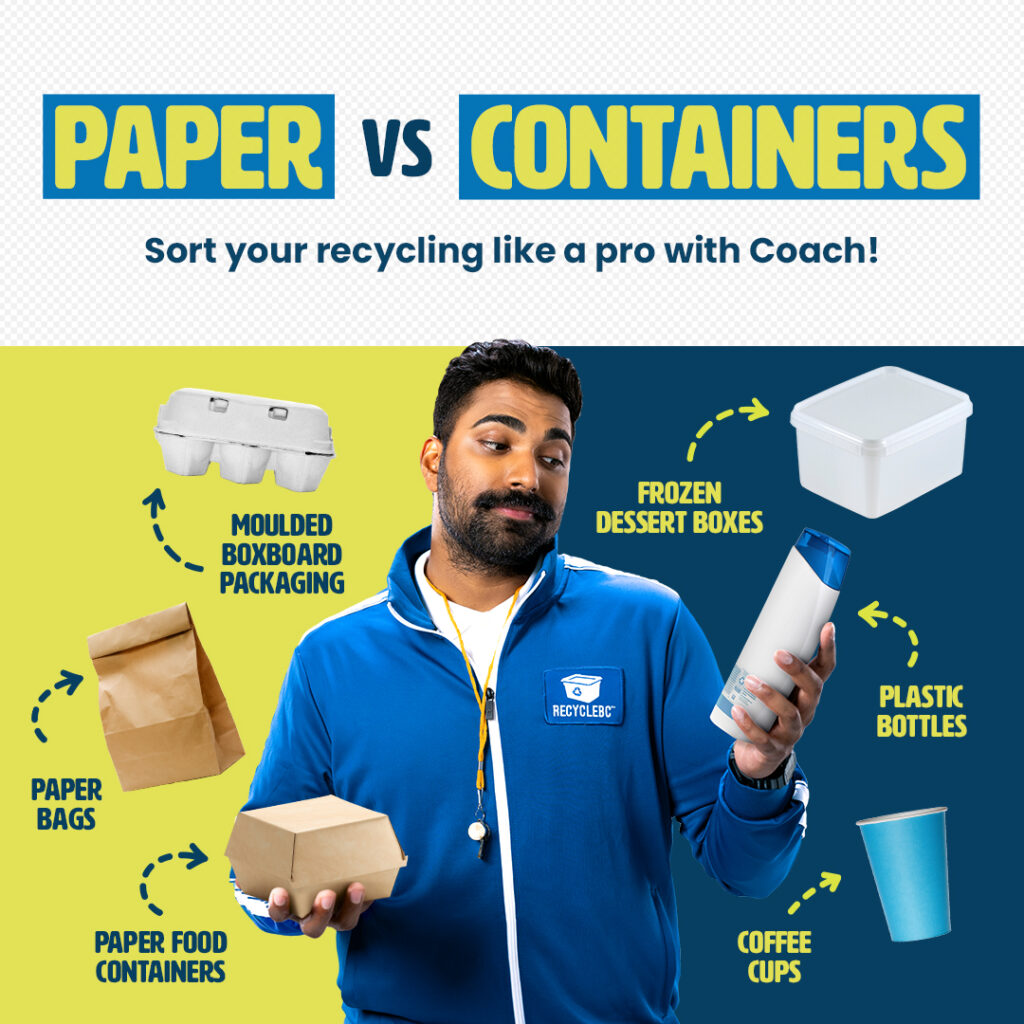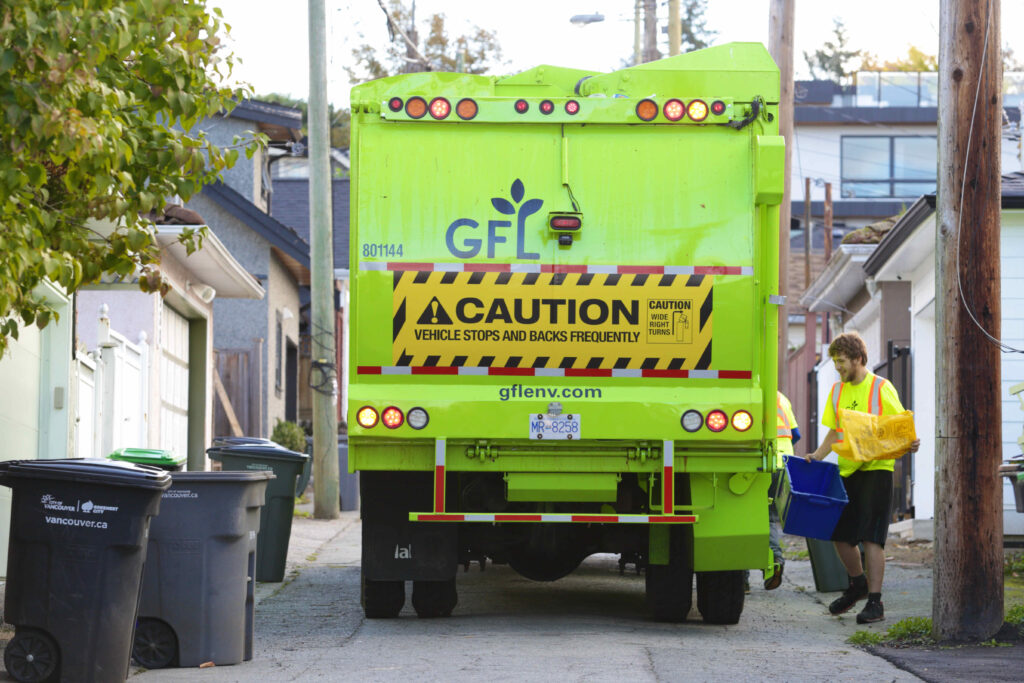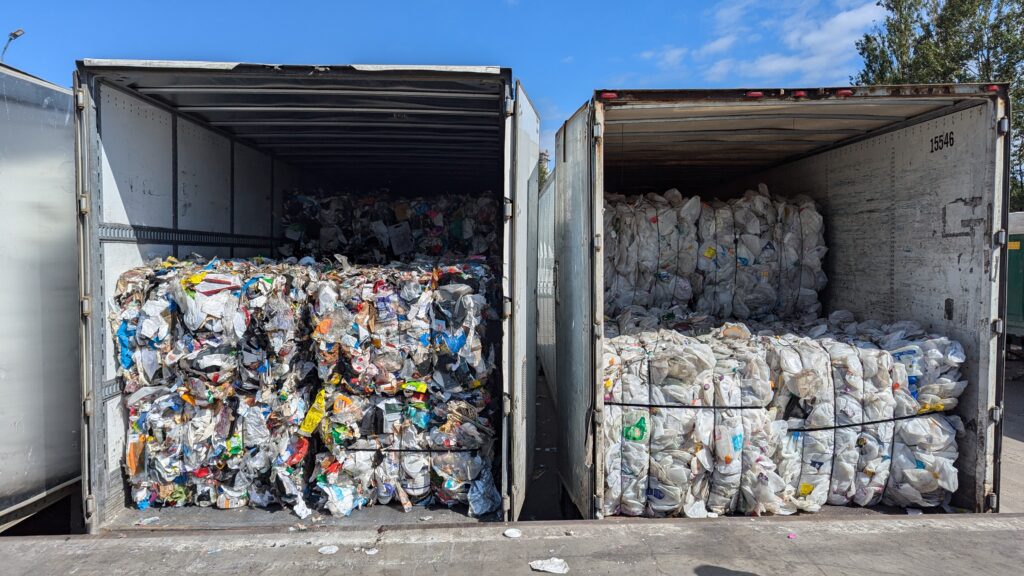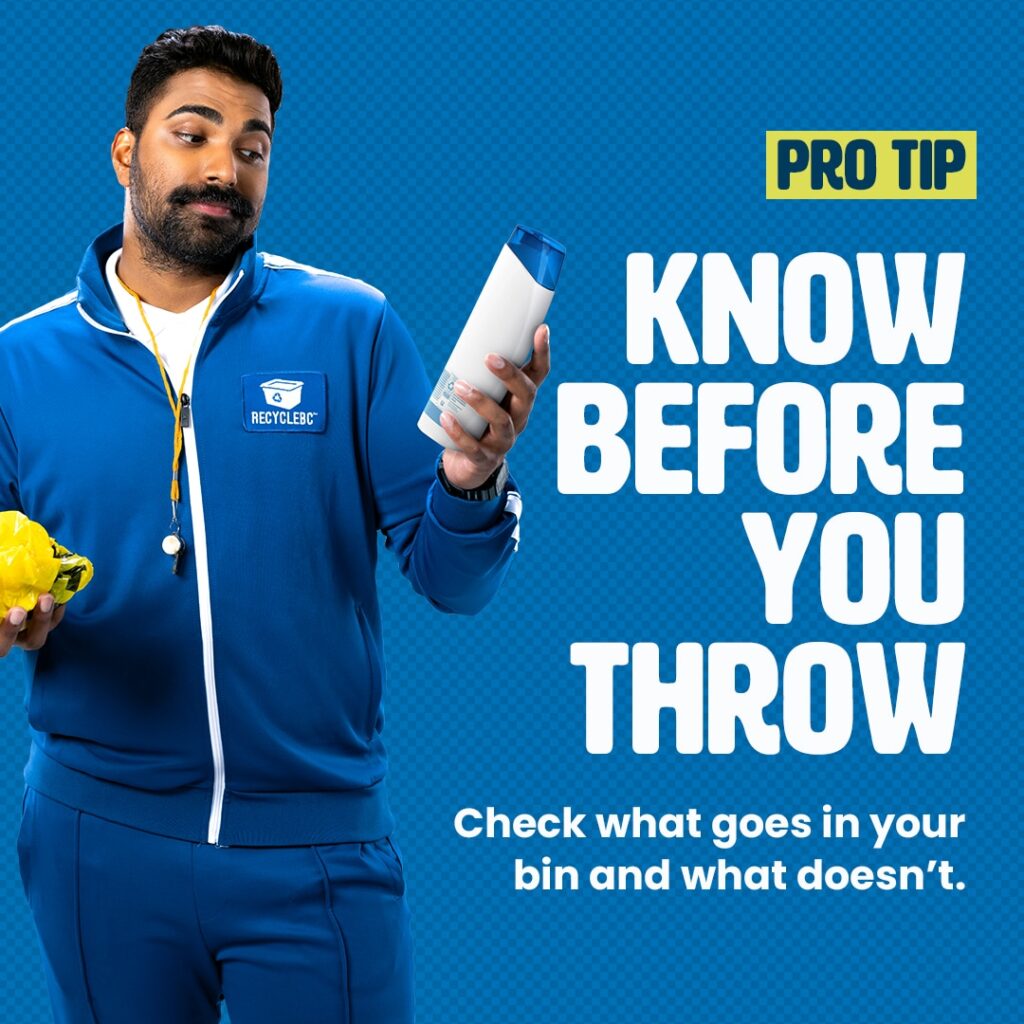
Many of us know what common recyclables look like, but do you know how to sort them effectively? Coach Rick knows that a sorted bin always wins, but he also knows that sorting your recyclable waste can be a daunting task. In this article, Coach Rick Cycle will go through some tips on how to sort your recyclable materials for collection in the Recycle BC’s residential packaging and printed paper recycling program so you can level up your sorting game!
Single vs. Multi-stream Recycling
Depending on where you live, you might have to sort paper and cardboard into a different collection container from metal and plastic packaging, non-deposit glass, and in some select areas, flexible plastics. This kind of collection, referred to as multi-stream, uses a collection truck with multiple compartments for the sorted materials.
When a collection truck arrives at a sorting facility, it unloads the paper and cardboard in one area and metal and plastic packaging and cartons and coffee cups in another area, ensuring that the materials don’t get mixed together.
If non-deposit glass containers are collected, they are kept in a third compartment on the truck and unloaded in another area at the facility.
The different streams of materials are then processed, with the paper and cardboard baled for shipment to material remanufacturers and the metal and plastic packaging and cartons and coffee cups travelling through a series of conveyor belts and machines to be sorted into different packaging types before being baled and shipped.
Some communities collect paper and cardboard in the same collection container as metal and plastic packaging and cartons and coffee cups. The container is emptied into the collection truck, and the truck empties everything into the same place at the sorting facility, however, if non-deposit glass containers are collected, they are kept in a separate compartment on the truck and unloaded in another area at the sorting facility.
This kind of recycling collection is called single-stream recycling. Since the recyclable materials are mixed together, everything (but glass) passes through the sorting facility before it is baled for shipment to material remanufacturers.
Coach Rick’s Sorting Tips:
1. Set out your recyclable waste into their appropriate recycling containers
Your local recycling collector will have specific instructions for how and when to set out your recycling, but if it is collected as part of the Recycle BC program, you can include any of the packaging and printed paper from Recycle BC’s list of accepted items.
If your collection is multi-stream, please sort as follows:
Paper and Cardboard collection container (typically a reusable bag (often yellow), curbside/multi-family cart, or blue box):
- Newsprint
- Flyers
- Office paper
- Letters and envelopes
- Boxes
- Paper bags
- Paper egg cartons
- Toilet paper or paper towel tubes
- Shredded paper (contained in a paper bag, or box)
Flatten large cardboard boxes that do not fit in the collection container and place beside the container.
Cartons and Coffee Cup + Plastic and Metal Packaging collection container (typically a blue box):
- Cartons and coffee cups
- Plastic jugs, jars, tubs, and trays (for milk, spreads, yogurt, fruit, etc.)
- Plastic caps, tops, lids, pumps; plastic clamshells for fruit or bakery items
- Plastic garden plant pots and seedling trays; plastic or aluminum takeout containers
- Empty aerosol cans
- Metal cans for food
- Spiral-wound cans for frozen juice, chips
Glass collection container (typically a different coloured box if collected from curbside or multi-family building in a separate container):
- Non-deposit glass bottles and jars for vinegar, edible oils, spreads, etc.
Other recyclable items (Depot Only):
- Plastic bags and overwrap and
- Foam packaging
- Clear or coloured non-deposit glass bottles and jars
- Batteries, appliances, light bulbs, and many other household materials are also accepted for recycling at depots
Visit RecycleBC.ca/Depots for information about other recycling options and locations.
2. Include only clean and empty packaging and containers
Leaving food or cleaning supplies in your containers is wasteful and can attract pests and or wildlife to your home and at sorting facilities.
Coach’s pro tip is to take your sorting play a step further by rinsing your containers! One way to do this is to give them a quick rinse or soak in your dish water after hand-washing dishes.
3. Do not put Hazardous Materials in your Recycling
Hazardous materials left in residential recycling pose a major fire and explosion risk and put our workers and our environment at risk. For a list of hazardous materials and the facilities that accept them, visit RecycleBC.ca/Hazardous for more information.
Empty aerosol containers used for food, air fresheners, shaving cream, deodorant, hairspray, etc. are accepted under the Recycle BC program as residential packaging.
To ensure that any excess residue is eliminated, hold down the can’s nozzle and spray out the contents into an old rag or newspaper until you do not hear any sound. Once the aerosol can is empty, many municipalities accept these items in the curbside recycling bin.
For residents who do not have this option, these cans can be recycled free of charge at a number of Recycle BC depots
4. Keep recycling loose!
Recycling tied within plastic bags or stuffed into other containers cannot be sorted properly. To save space in your recycling container, flatten containers and cartons instead.
Coach hopes this can be a handy guide for all your recycling sorting plays! For more information on what can be recycled, visit RecycleBC.ca/Material
A sorted bin always wins!






